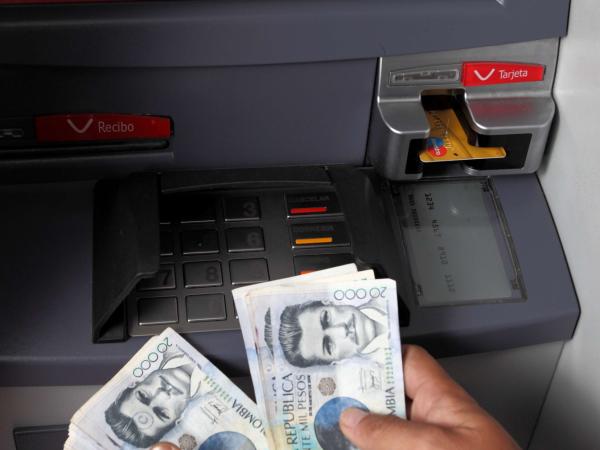The set of credit institutions recorded profits of $13.9 trillion at the end of November 2021and among these, the banks obtained a positive result of $11.7 billion, according to figures from the Financial Superintendence.
(Banks posted profits of $11.7 trillion in November 2021.)
The profits of credit establishments grew by 139% compared to the figures for the same month of 2020, when these were $5.8 trillion, while those of the banks rose 177% compared to the $4.2 trillion accumulated in January-November 2021.
Among these credit institutions, financial corporations earned $1.9 billion compared to $1.5 billion a year ago, financing companies $172.8 billion, compared to $50 billion in November 2020 and financial cooperatives $89.4 billion, compared to $49.2 billion.
Special Official Institutions earned $3.2 trillion, followed by the insurance industry with $1 trillion and pension and severance fund management companies with $941.2 billion.
INCREASE CREDIT
According to the Financial Superintendent, total portfolio growth accumulates four months of growth as the pace of economic recovery picks up.
The gross balance amounted to $569.3 trillion, with which the deepening indicator stood at 50.3% of GDP.
(Investment options in the sights of experts for 2022).
in real terms the gross portfolio registered an annual variation of 3.2%.
The commercial portfolio grew 0.5% annually in real terms, the first month in positive territory since February 2021 and adding $4.6 trillion to the portfolio of the modality during the month.
Consumption is the modality that contributes the most to the growth of the total portfolio (1.7 percentage points), registering a real annual increase of 6%. As of November, free investment and warrant products are the most dynamic, accumulating real increases of 13% and 7.5%, respectively, in the 11 months of 2021.
The housing portfolio grew 6.7% in real annual terms, a higher rate than that registered in the same period of 2020 (5.3%).
Finally, microcredit reported in November the ninth month of positive growth up to 3.6% real.
The lower amount segment, that is, up to 25 monthly minimum wages, accumulates a real annual increase of 5.9% so far this year to November.
The measures that the entities supervised by the Financial Superintendence have contained the deterioration and preserved the payment habit. After its closure in August, the Debtor Assistance Program (PAD) sheltered at the end of November 1.9 million financial consumers and with amounts close to $30.3 billion, 5.3% of the gross portfolio reported in November.
By amount, the main segments subject to the PAD were free investment ($8.5 billion), credit card and revolving ($5.7 billion), SMEs ($3.1 billion), Non-VIS housing ($1.9 billion), corporate ($1.8 billion), residential leasing ($1.8 billion), business leasing ($1.4 billion) and financial leasing ($917,800).
The portfolio balance that reports a delinquency greater than 30 days reached $24.1 billion, a decrease equivalent to 15.5% real annual, as a result of the contraction of the past due balance in commercial, consumption, housing and microcredit, of 15.4% , 20.9%, 1.5% and 1.3%, respectively. The daily portfolio reached $545.2 billion, 95.8% of the total balance. In the case of the PAD, this proportion amounts to 93.9% of the total balance covered by the program.
The quality due to arrears, measured as the ratio between the overdue and gross portfolio, was 4.2% for the total portfolio.
The real annual increase of total provisions closed with a real annual contraction of 6.2%, with a balance of $38.1 trillion.
The default coverage indicator, calculated as the ratio between the balance of provisions and the overdue portfolio, stood at 158.1% in November. This translates into the fact that for every peso of overdue portfolio, establishments have about $1.6 to cover it.
At the end of November, deposits and liabilities registered a balance of $540.6 trillion, a real annual variation of 2.8% (nominal 8.2%).
The capital levels of the credit establishments allow them to continue giving impetus to financing and supporting the economic recovery. Total solvency stood at 21.72%, 12.72 percentage points higher than the minimum required (9%). Basic solvency, made up of the capital with the greatest capacity to absorb losses, reached 17.11%, exceeding the regulatory minimum of 4.5% by 12.61 percentage points.
By type of entity, the banks registered a total solvency level of 20.20% and a basic solvency of 15.32%.

















